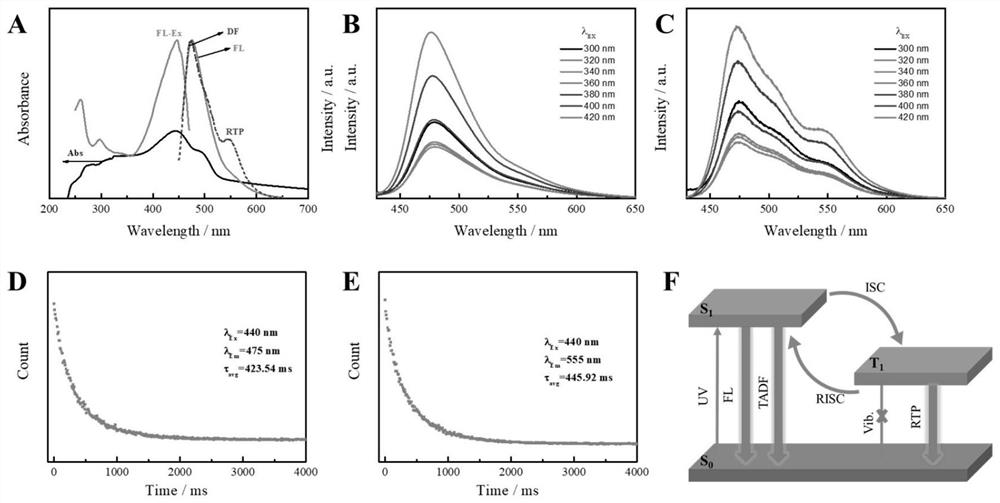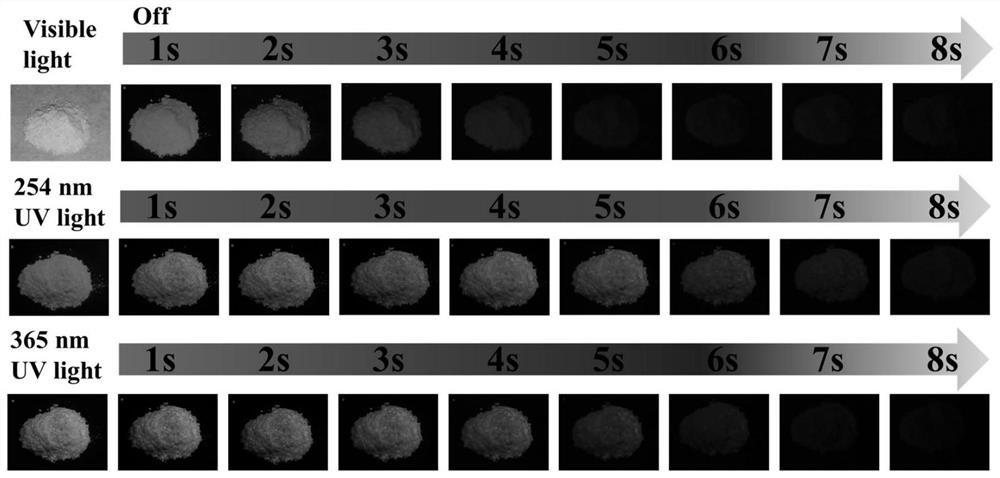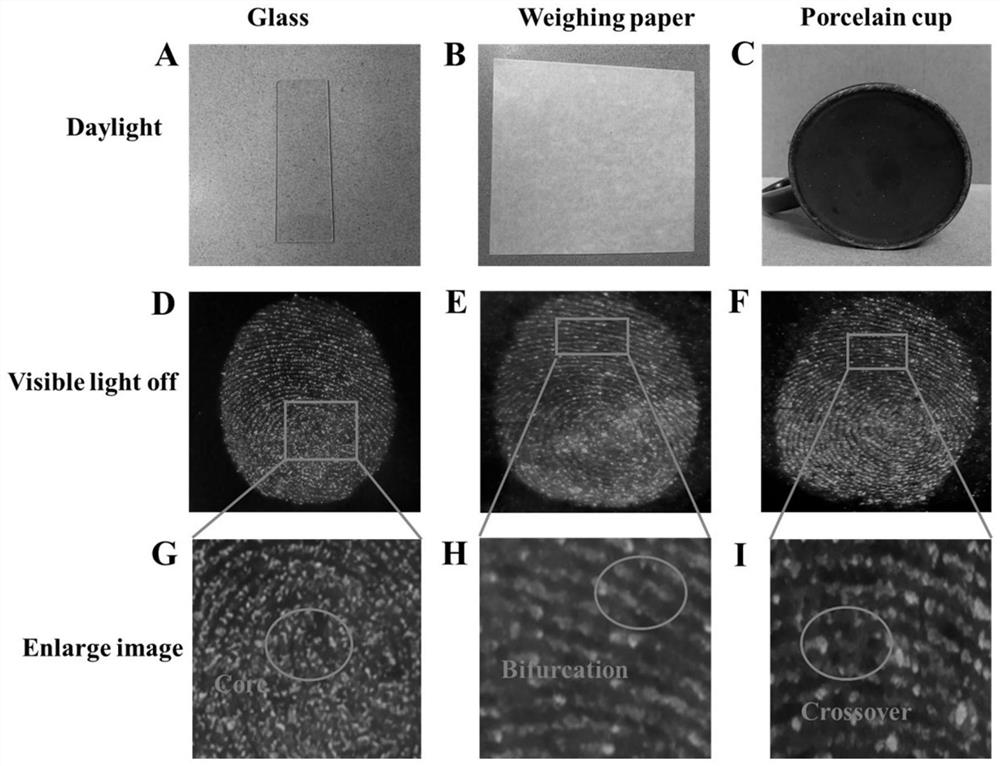Visible light excited dual-mode long-afterglow carbon dot compound as well as preparation method and application thereof
A compound and dual-mode technology, applied in the field of materials, can solve the problems of limited applications, achieve the effects of promoting intersystem crossing, realizing long afterglow emission excited by visible light, and high optical stability
- Summary
- Abstract
- Description
- Claims
- Application Information
AI Technical Summary
Problems solved by technology
Method used
Image
Examples
Embodiment 1
[0039] 1) Weigh 100mg of safranine T and dissolve it in 20mL of 0.5M sodium hydroxide solution, and sonicate for 10min to completely dissolve the safflower T; After heating at 200° C. for 5 hours, the CDs solution was obtained and stored in a 4° C. refrigerator.
[0040] 2) Take different volumes (100 μL, 500 μL, 1000 μL, 2000 μL, 3000 μL, 3500 μL) of the CDs solution and 2 g of boric acid prepared in step 1), add them into 40 mL of secondary water, and sonicate for 10 min to make them fully mixed. The mouth of the beaker was sealed with tin foil to prevent the water from evaporating too quickly.
[0041] 3) The mixed solution of CDs and boric acid in step 2) was placed in an oven at 180° C. for 5 hours and then cooled to room temperature.
[0042] 4) Grinding the sample prepared in step 3) into powder to finally obtain CDs / B 2 o 3 Compound powder, stored in a desiccator.
Embodiment 2
[0044] 1) Weigh 100mg of safranine T and dissolve it in 20mL of 0.5M sodium hydroxide solution, and sonicate for 10min to completely dissolve the safflower T; After heating at 200°C for 5 hours, the CDs solution was obtained and stored in a refrigerator at 4°C.
[0045]2) Take 2000 μL of the CDs solution prepared in step 1) and boric acid of different masses (0.5 g, 1 g, 2 g, 3 g, 4 g), add it into 40 mL of secondary water, and sonicate it for 10 min to make it fully mixed. The mouth of the beaker was sealed with tin foil to prevent the water from evaporating too quickly.
[0046] 3) The mixed solution of CDs and boric acid in step 2) was placed in an oven at 180° C. for 5 hours and then cooled to room temperature.
[0047] 4) Grinding the sample prepared in step 3) into powder to finally obtain CDs / B 2 o 3 Compound powder, stored in a desiccator.
Embodiment 3
[0049] 1) Weigh 100mg of safranine T and dissolve it in 20mL of 0.5M sodium hydroxide solution, and sonicate for 10min to completely dissolve the safflower T; After heating at 200° C. for 5 hours, the CDs solution was obtained and stored in a 4° C. refrigerator.
[0050] 2) Take 2000 μL of the CDs solution prepared in step 1) and 2 g of boric acid, add it into 40 mL of secondary water, and sonicate it for 10 min to make it fully mixed. The mouth of the beaker was sealed with tin foil to prevent the water from evaporating too quickly.
[0051] 3) Put the mixed solution of CDs and boric acid in step 2) in an oven at different temperatures (140°C, 160°C, 180°C, 200°C, 220°C) for 6 hours, then cool to room temperature.
[0052] 4) Grinding the sample prepared in step 3) into powder to finally obtain CDs / B 2 o 3 Compound powder, stored in a desiccator.
PUM
 Login to View More
Login to View More Abstract
Description
Claims
Application Information
 Login to View More
Login to View More - R&D
- Intellectual Property
- Life Sciences
- Materials
- Tech Scout
- Unparalleled Data Quality
- Higher Quality Content
- 60% Fewer Hallucinations
Browse by: Latest US Patents, China's latest patents, Technical Efficacy Thesaurus, Application Domain, Technology Topic, Popular Technical Reports.
© 2025 PatSnap. All rights reserved.Legal|Privacy policy|Modern Slavery Act Transparency Statement|Sitemap|About US| Contact US: help@patsnap.com



